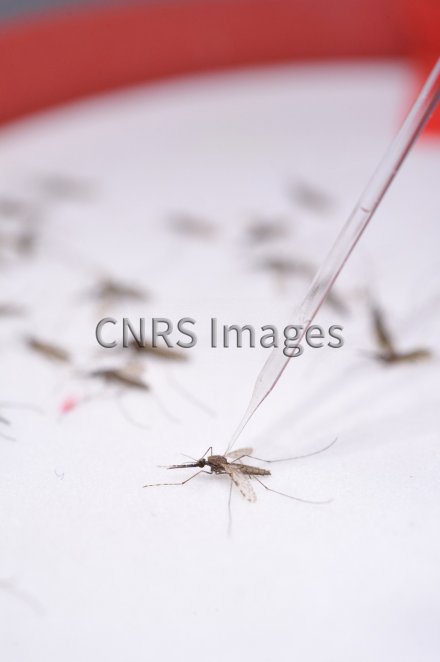Production year
2011

© Benoît RAJAU/CNRS Images
20110001_2301
Injection d'ARN double brin dans le thorax d'un moustique "Anopheles gambiae" endormi par du dioxyde de carbone (CO2). Soixante-neuf nanolitres d'une solution d'ARN double brin spécifique d'un gène sont introduits dans le thorax des moustiques anesthésiés, afin d'inhiber l'expression de ce gène. L'objectif est de comprendre la réponse immunitaire du moustique "Anopheles gambiae" vis-à-vis du parasite du paludisme, maladie infectieuse dont il est le principal vecteur. Il s'agit aussi de développer de nouvelles stratégies de lutte antipaludéenne.
The use of media visible on the CNRS Images Platform can be granted on request. Any reproduction or representation is forbidden without prior authorization from CNRS Images (except for resources under Creative Commons license).
No modification of an image may be made without the prior consent of CNRS Images.
No use of an image for advertising purposes or distribution to a third party may be made without the prior agreement of CNRS Images.
For more information, please consult our general conditions
2011
Our work is guided by the way scientists question the world around them and we translate their research into images to help people to understand the world better and to awaken their curiosity and wonderment.